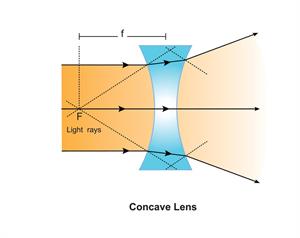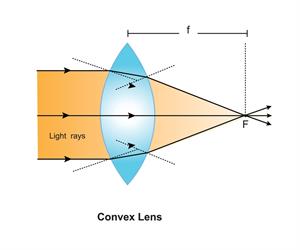PDF chapter test TRY NOW
Let us look at an activity.
- While doing this activity, avoid looking directly at the Sun or through a lens. You may damage your eyes if you do so.
- Take a convex lens and hold it in your hand. It should be pointed in the direction of the Sun.
- On a sheet of paper, concentrate the Sun's light. Take a clear, bright picture of the Sun.
- For a while, keep the paper and the lens in the same position. Keep an eye on the paper.
- What happened? Why? Recall your experience.
The paper starts to burn and emits smoke. After a while, it might even catch fire.
What causes this to happen?
The Sun's light is made up of parallel rays of light. The lens converged these rays at the sharp, bright spot that had formed on the paper. The bright spot on the paper is, in fact, a real image of the Sun. The heat was generated when sunlight was concentrated at a specific point. The paper began to burn as a result of this.
Now consider light rays parallel to the principal axis of a lens.
What happens when such light rays pass through a lens?
A convex lens receives several rays of light that are parallel to the principal axis. After refraction by the lens, these rays converge at a point on the principal axis. The principal focus of the lens is located on the principal axis.
Let us take a look at how a concave lens works.

Light rays passing parallel through convex lens
A concave lens receives several rays of light that are parallel to the principal axis. Following refraction by the lens, these rays appear to diverge from a point on the principal axis. The principal focus of the concave lens is located on the principal axis.

Light rays passing parallel through convex lens
You can get another principal focus on the opposite side of the lens by passing parallel rays from the opposite surface of the lens. The letter F is commonly used to denote the main focus.
A lens, on the other hand, has two principal foci. They are represented by the letters and . The focal length of a lens is the distance between the main focus and the optical centre. The focal length is represented by the letter \(f\). The approximate focal length of the lens is determined by the distance between the position of the lens and the position of the Sun's image in this activity.

Image formed by spherical lens
